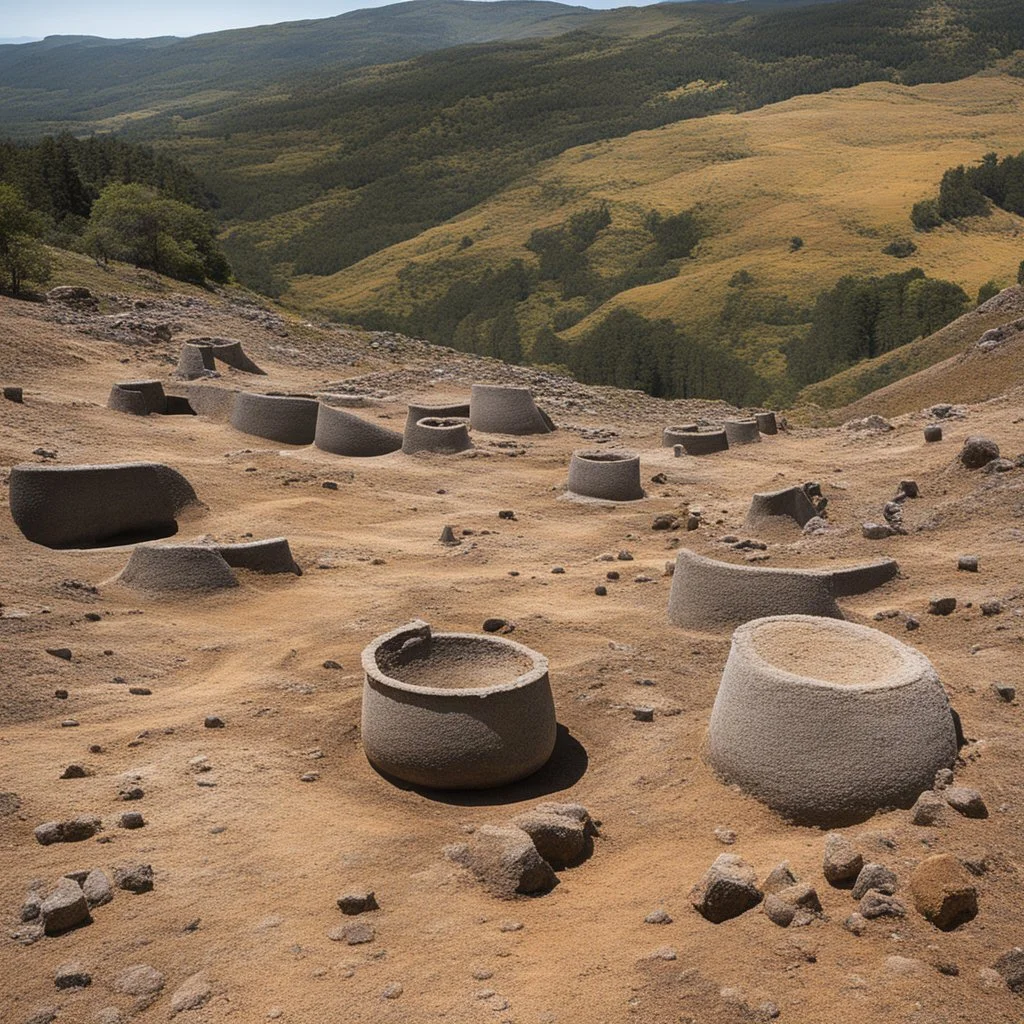

@generalpha
Prompt
Very early dates for Bell Beakers were found in Castelo Velho de Freixo de Numão in Guarda, central Portugal. The site was located on the summit of a spur. A short-lived first occupation of pre-Bell Beaker building phase at c. 3000 BC revealed the remains of a tower, some pavings, and structures for burning. After a break of one or two centuries, Bell Beaker pottery was introduced in a second building phase that lasted to the Early Bronze Age, c. 1800 BC. A third building phase followed directly
statue, doubles, twins, entangled fingers, Worst Quality, ugly, ugly face, watermarks, undetailed, unrealistic, double limbs, worst hands, worst body, Disfigured, double, twin, dialog, book, multiple fingers, deformed, deformity, ugliness, poorly drawn face, extra_limb, extra limbs, bad hands, wrong hands, poorly drawn hands, messy drawing, cropped head, bad anatomy, lowres, extra digit, fewer digit, worst quality, low quality, jpeg artifacts, watermark, missing fingers, cropped, poorly drawn
1 year ago
Model
SSD-1B
Guidance Scale
7
Dimensions
1024 × 1024



![[very impressive high res masterpiece in Kodak Eastman 5247, scene by László Krasznahorkai] a landscape](https://img.stablecog.com/insecure/256w/aHR0cHM6Ly9iLnN0YWJsZWNvZy5jb20vYmQxMTQ0NjctMmQxNi00YjQxLTlmMzktMzFkOWU5ZjgwMGVlLmpwZWc.webp)
![Beaker culture introduces the practice of burial in single graves, suggesting an Earlier Bronze Age social organisation of family groups.[153] Towards the Later Bronze Age the sites move to potentially fortifiable hilltops, suggesting a more "clan"-type structure.[154] Although the typical Bell Beaker practice of crouched burial has been observed,[155] cremation was readily adopted[156] in accordance with the previous tradition of the autochthons.[134] In a tumulus the find of the extended skele](https://img.stablecog.com/insecure/256w/aHR0cHM6Ly9iLnN0YWJsZWNvZy5jb20vODk2ZmI5NzctNjhjYS00MWQ1LWFkYWYtYTU3NTQ0ZmRkYjEyLmpwZWc.webp)



![Beaker culture introduces the practice of burial in single graves, suggesting an Earlier Bronze Age social organisation of family groups.[153] Towards the Later Bronze Age the sites move to potentially fortifiable hilltops, suggesting a more "clan"-type structure.[154] Although the typical Bell Beaker practice of crouched burial has been observed,[155] cremation was readily adopted[156] in accordance with the previous tradition of the autochthons.[134] In a tumulus the find of the extended skele](https://img.stablecog.com/insecure/256w/aHR0cHM6Ly9iLnN0YWJsZWNvZy5jb20vYzI2NzdkMzgtNDZiMS00OGY1LThkNjAtMmVkODQ1NmNmNjVlLmpwZWc.webp)


